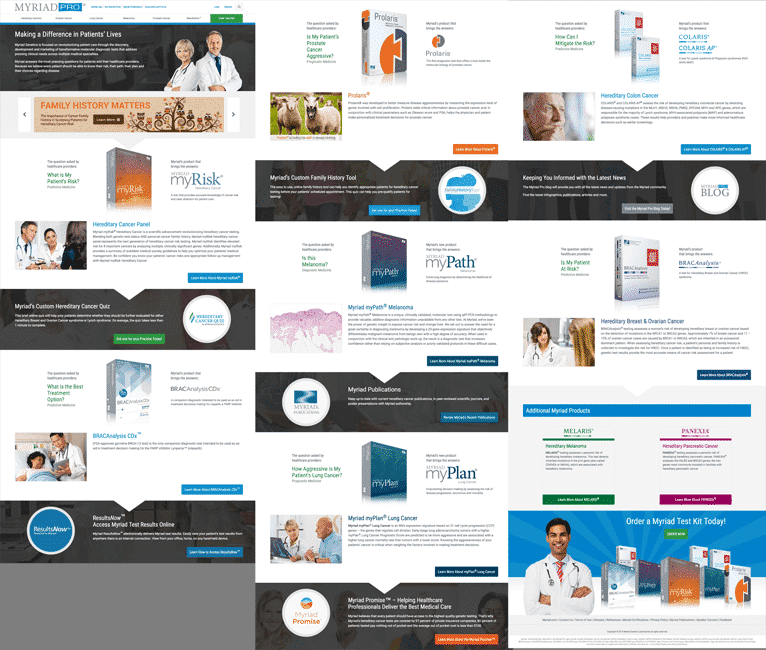by Aden Andrus • March 17, 2017
How to Get the Most Leads Out of Your Plumbing/HVAC Landing Page
If you’re running an online ad campaign trying to drive leads for your plumbing/HVAC business, one thing is for certain: if you aren’t sending your clicks to a compelling plumbing/HVAC landing page, you’re going to end up wasting a lot of money.
After all, people click on your ads because they’re interested in enough to learn more. If the page they land on doesn’t convince them that they should give you a call (or fill out your form), they’ll leave.
So, if your landing page (the page they end up on after they click on your ad) isn’t set up for success, you end up paying for a lot of clicks that never turn into plumbing/HVAC leads.
That’s not a good situation.
To put it simply, your plumbing/HVAC marketing campaign is only as good as the landing page it sends people to, so you need a plumbing/HVAC landing page that is designed to get people to convert. Sound like a challenge? Don’t worry, with this article in hand, you’ll be well on your way to creating a page that consistently drives the leads that you need.
1. Keep Your Messaging Consistent
The first key to an effective landing page is messaging consistency. In other words, the messaging of your ad should match the messaging of your plumbing/HVAC landing page.
In fact, messaging consistency is the primary reason why landing pages exist. A home page has to meet dozens (if not hundreds or thousands) of different needs. A good marketing campaign delivers traffic with one specific need.
If that traffic lands on a home page with a hundred different options and messages, what are the odds that they’ll actually find what they’re looking for and convert?
Plumbing/HVAC campaigns perform best when they deliver a consistent experience. If your ad appeals to a certain type of person, your landing page should appeal to that person as well. That way, when they arrive on your page, they think…

Instead of…

If your ad promises one thing and your landing page delivers something else, you’ll confuse your potential customers. And, the more confused people feel, the less likely they are to buy…
2. Focus on Them, Not You
When you get right down to it, most of the people who click on your ads are asking themselves one simple question:
Can you solve my problem?
Depending on the person, the problem they need solved can vary quite a bit. For example, someone who’s had a bad experience with a plumbing/HVAC company in the past might be worried about hiring another bad egg.
In hopes of avoiding another nightmare scenario, they might search on Google for a “reputable plumbing company”. If they see your ad and click on it, what sort of content do you think will make them feel like your company will give them the kind of experience they’re looking for?
Odds are, they’ll respond best to a page that features testimonials about your customer service, awards your customer service department has won, statistics about response times…you get the idea.
Why? Because it addresses their real concern. They want to know that working with you will be a good, positive experience and your page helps them feel like you are a safe company to work with. And, if they feel like you are the solution to their problem—they need a plumbing/HVAC company with great customer service—they’ll give you a call.
3. Create a Compelling Call-to-Action
The goal of any plumbing/HVAC marketing campaign is to get people to take action. Depending on your campaign, you might want them to submit a lead form, sign up for a trial period, subscribe to your email list…but your goal is to get them to do something.
But, if you don’t tell people what you want them to do, what are the odds that they’ll actually do it?
A quality call-to-action (CTA) solves this problem. Essentially, your CTA tells your potential customers what they should be doing next. It’s the old, “Submit”, “Sign Up”, “Get My Free Proposal”, “Try Now” button you’ve probably seen on countless pages.
However, telling someone to “Submit” and actually convincing them to do it are two very different things. If you want people to act on your CTA, you need to convince them that doing what you want them to do is in their best interest.
With that in mind, your CTA should be a natural extension of your landing page. Remember, they are on your plumbing/HVAC landing page because they’re hoping that your business can solve a problem for them. Your CTA should show them how converting will get them one step closer to solving their problem.
For example, a call to action like “Request a Quote” is far more meaningful than something generic like “Submit”. Basically, “Request a Quote” implies that if a user converts, they will get something of value that will help them get closer to solving their problem.
Of course, the right CTA for your landing page will depend entirely on the specific problem or need of your target audience, but if you’ve already created a landing page that is focused on that problem or need, creating your CTA should be easy. Just ask yourself, “If a potential customer read this page and liked what they saw, what would they naturally want to do next?” The answer is your CTA.
4. Keep Things Simple
Often, when you’re creating a plumbing/HVAC landing page, it can be easy to overcomplicate things. There’s a natural temptation to think, “What if my target audience wants to know about X? I better add it to my page.” or “What about Y? That might be a point of concern for my audience…I should probably throw that in, too.”
Before you know it, you have a landing page that looks like this (I split the page into 3 columns so you wouldn’t have to scroll all the way through their whole page…):

However, the fact of the matter is, most people don’t scroll very far down your landing page. And, those who do, don’t usually read most of your content.
Remember, your potential customers are on your page because they have a specific problem that they need solved. If your landing page makes it obvious that your business may be able to meet their needs, they’ll convert. If not, they’ll leave.
So, even if your landing page does address that one specific concern that a potential customer might have, but they have to hunt through your page to find the answer, most people won’t take the time to find that answer. The issue might be worth addressing in a separate marketing campaign and landing page, but if you feel like you need to include tons of extra content to get people to convert, you probably don’t know your target audience’s needs and problems well enough.
This applies to forms as well. Longer forms tend to decrease conversion rates, so keep your forms focused on the information you truly need.
As you’re trying to decide what to add to your page and what to leave out, ask yourself the following:
- Am I overcomplicating things? If you only need them to call and your staff can resolve any additional questions, focus on getting them to call, not answering every possible question they might have.
- Can another medium solve the problem? Sometimes, a video or image can be worth a thousand words of text. If an image can say it better, try an image.
In general, the best plumbing/HVAC landing pages keep things simple. Their content is directly focused on the needs of their visitors and their forms only ask for relevant information. How much content or how long of a form you need will vary from business-to-business and page-to-page, but a simple, focused page will almost always outperform a more complicated one.
5. Use Social Proof
People put a lot more stock into what other people say about your business than what you say about your business. After all, you get paid to say good things about your business.
So, if you really want to convince your potential customers that you can solve their problem, it’s often best to let your current customers do the talking.
Testimonials and customer reviews are one of the most compelling elements of a landing page. They give people an opportunity to really get a sense for what it’s like to buy what you’re selling.
Here are a few ways to get the most out of social proof:
- Get testimonials from well-known sources. An endorsement from Oprah means a lot more than an endorsement from Orpah. If Oprah endorses the wrong product, that can have big repercussions for her good name. If Orpah endorses the wrong product, well, who is Orpah anyways? Same idea applies to your plumbing/HVAC landing page.
- Add more details. Liars avoid the details. Therefore, the more details (location, company name, statistics, case studies, etc) you have, the more believable your testimonial will be.
- Include images. A quote is good. A quote with a picture is better. A video testimonial is awesome.
Social proof is what makes your marketing message meaningful. Without it, your landing page just feels like bragging.
Conclusion
A well-designed plumbing/HVAC landing page can be the difference between a mediocre marketing campaign and a gold mine. Fortunately, by applying the principles in this article to your landing pages, you can create an incredibly compelling landing page for your plumbing/HVAC business.
Incidentally, if you’d like some help putting together some high quality plumbing/HVAC landing pages or would just like some feedback on your existing landing pages, let me know here or in the comments. I’d love to help.
How do you approach plumbing/HVAC landing pages? Are there any tricks you use to improve conversion rates on your pages? Let me know in the comments.





